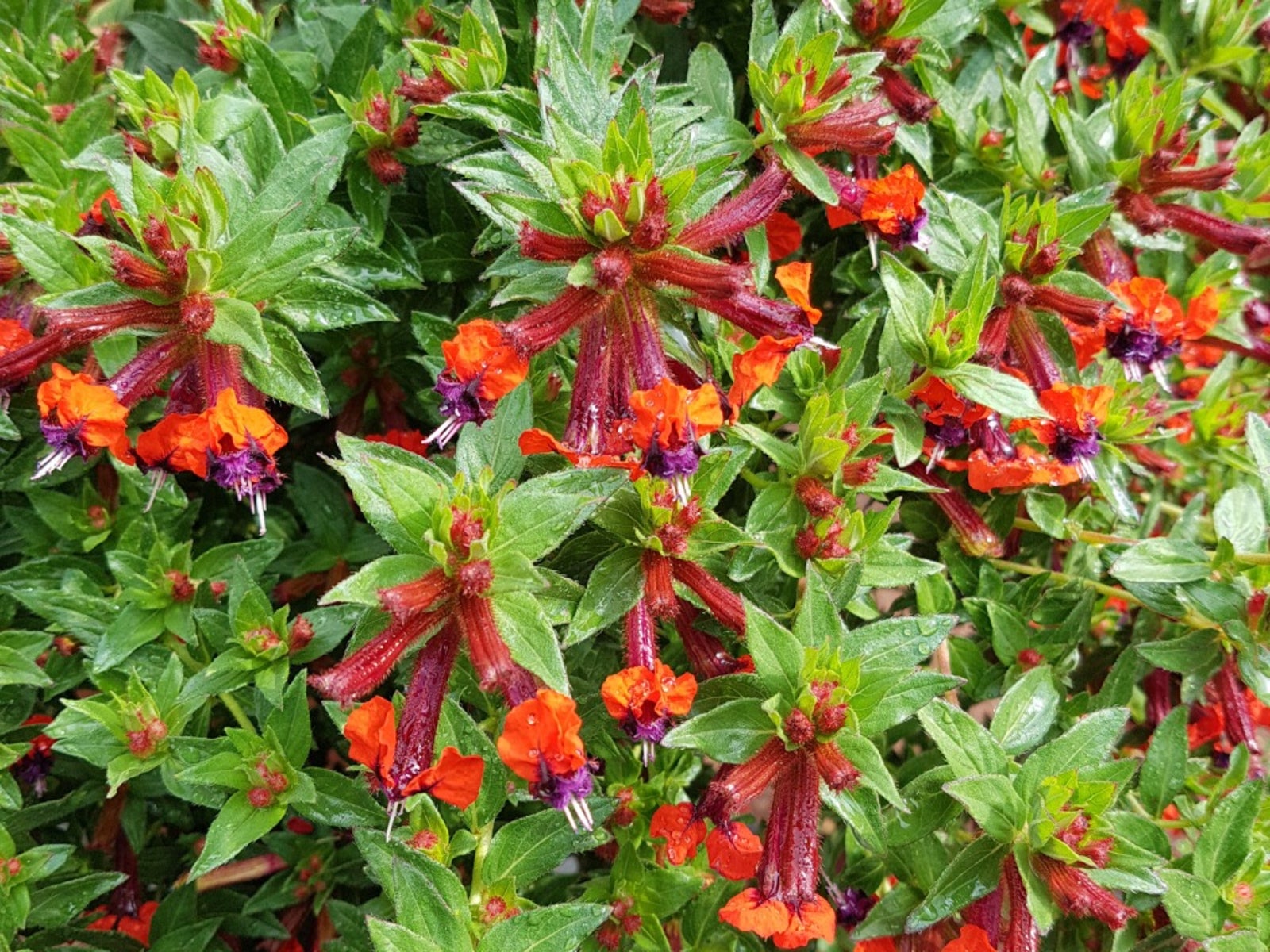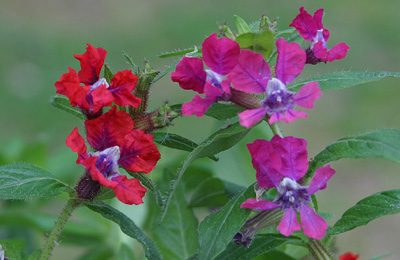The bat faced cuphea (Cuphea llavea) is a beloved houseplant known for its unique flowers that resemble bats in flight However, these plants can fall victim to destructive spider mite infestations. If left unchecked, spider mites can seriously damage and even kill cuphea plants. Fortunately, there are several effective methods for getting rid of spider mites in bat faced cuphea plants
Identifying Spider Mite Infestations
The first step is learning how to identify spider mite infestations early on Here are the most common signs
-
Fine webbing on the undersides of leaves and along stems This webbing may be difficult to see at first
-
Specks that look like moving dust on the leaves and webbing. These are the spider mites themselves.
-
Stippling damage on leaves, which appears as yellow or white dots on the surface.
-
Distorted and curled leaves that eventually turn brown.
-
A decline in the plant’s overall health and vitality.
Inspect cuphea plants routinely, especially the undersides of leaves, to catch infestations before they get out of control. Spider mites thrive in hot, dry conditions.
Non-Chemical Spider Mite Treatments
For minor infestations, there are several effective non-chemical methods to get rid of spider mites:
-
Strong streams of water: Blast spider mites off plants with a forceful shower. Focus on the undersides of leaves and stems where mites congregate. Repeat daily for a week.
-
Insecticidal soap: Insecticidal soaps dissolve the outer shells of spider mites, causing dehydration. Apply to all plant surfaces according to label directions. Repeat every 3-5 days for 2 weeks.
-
Neem oil: Neem oil disrupts the reproductive cycle of spider mites. Mix neem oil with water per label instructions and spray plants, including leaf undersides. Reapply weekly.
-
Rubbing alcohol: Mix equal parts rubbing alcohol and water in a spray bottle. Mist plant leaves thoroughly, especially undersides. The alcohol kills mites on contact while drying out eggs. Reapply every 4-5 days.
-
Horticultural oils: These oils smother spider mites. Follow instructions and coat all plant surfaces, including leaves, stems and buds. Reapply after 7-10 days if needed. Oils can burn plants so test on a small area first.
-
Insecticidal dusts: Dusts like diatomaceous earth physically damage the bodies and mouthparts of spider mites. Avoid leaves and apply dusts only to stems, buds, soil surface and pot edges.
Chemical Spider Mite Treatments
For severe infestations, chemical miticides may be necessary. Here are some options:
-
Abamectin: This powerful miticide kills spider mites through contact and ingestion over 1-2 weeks. Alternate with other miticides to prevent resistance.
-
Fenpyroximate: Fenpyroximate forces spider mites to stop feeding within hours, eventually causing death. Apply according to label every 7-10 days.
-
Bifenzate: Bifenzate interferes with spider mite growth and molting. Coat all plant surfaces thoroughly. Reapply after 7-14 days if needed.
-
Acequinocyl: Acequinocyl provides rapid knockdown of active mites while also inhibiting egg hatching. Alternate with other chemical controls.
Always follow label directions carefully when using miticides or any chemicals on plants. Isolate and treat infested plants promptly to avoid spreading mites.
Preventing Spider Mites in Bat Faced Cuphea Plants
Prevention is the best defense against destructive spider mite infestations:
-
Provide good airflow and avoid overcrowding plants.
-
Maintain optimal humidity levels between 40-60%.
-
Hose plants down regularly to wash away potential mites.
-
Apply a layer of diatomaceous earth on the soil as a deterrent.
-
Release beneficial predatory mites to maintain balance.
-
Inspect plants routinely for early signs of mites. Isolate and treat infested plants quickly.
-
Remove and destroy any severely infested, dying plants.
With persistence and a multi-pronged approach, you can get a spider mite infestation under control and restore the health of your bat faced cuphea plants. Consistent monitoring and prevention will help avoid costly infestations in the future.
Reviving Spider Mite Damaged Plants
If your cuphea plant is left with damaged leaves and poor health after battling spider mites, take these steps to support its recovery:
-
Prune away any desiccated or dead leaves and stems which can harbor mite eggs.
-
Provide the plant with plenty of bright, indirect light to encourage new growth.
-
Maintain a consistent watering schedule, allowing the soil to dry slightly between waterings.
-
Feed the plant with a balanced liquid fertilizer to replenish nutrients.
-
Mist the leaves periodically to increase humidity while the plant recovers.
-
Keep the plant isolated from other plants until you are sure the infestation has been eliminated.
-
Be patient as the plant regrows new leaves to replace those damaged by mites. This process can take weeks.
With diligent care and treatment, bat faced cuphea plants can bounce back after even heavy spider mite damage. Stay vigilant for any recurring signs of mites and take prompt action. Your efforts will be rewarded with a healthy, thriving cuphea plant once again.

Bat-faced Cuphea ‘Flamenco’ Series

Cupheas are great additions to our gardens for their beautiful tubular flowers that attract hummingbirds. Often, they’re an annual plant for us; it depends on the winter and your location. But you can’t beat them for hot weather attention!
As the name says, their flowers look like little bat faces. They have two upper petals that look like little ears. The ‘Flamenco’ series is from a new cultivar with bolder, larger flowers.
The purple and red bat-faced cuphea is also beautiful.
This is a very drought-tolerant plant, but it does need some water, so keep an eye on that. But, it is prone to root-rot, so don’t overwater it, especially in heavy clay soils.
It grows to about 2′ tall and 3′ wide so give it some room for air to circulate.
categories:
tags:
With imagination, creative reuse, and fun, Jeffrey Harris and Kevin George turned an empty San Antonio backyard into a sensory voyage. Liz Pfluger from Green ‘n Growing nursery in Pflugerville spotlights native plants geared for Central Texas weather, from the Blackland Prairie to the Hill Country. Caroline Riley from Mutable Earth Botanicals and Whole Life | watch episode →
Enchant your garden with easy-care, wildlife-friendly pond plants. Steve Kainer from Hill Country Water Gardens and Nursery explains how to fertilize and divide. Nancy Hall’s garden started from scratch and grew beyond fence lines with philosophy and art. Prevent extinction of valuable plants right in your own backyard! Landscape consultant Colleen Dieter from Central Texas | watch episode →
Spider Mites – 4 Ways To Naturally Get Rid Of Them
FAQ
Can a plant recover from spider mites?
What do you spray on spider mites on plants?
How long does it take to get rid of spider mites on plants?
How to care for bat face cuphea?
How do you get rid of spider mites at home?
Another effective home remedy to kill spider mites is to put a little dish soap in some water and spray it on them. Just combine three tablespoons of liquid dish soap with a gallon of water. Shake well and use it to mist your plants. The soapy water solution will suffocate the critters. Alternatively, purchase an insecticidal soap such as this one.
Why is it called a bat faced Cuphea?
It gets its common name of bat faced cuphea from the striking resemblance of its blooms to the face of a bat. Other common names include bunny ears, cuphea, red cuphea, St. Peter’s plant, and tiny mice. This broadleaf evergreen sub-shrub is native to Mexico and other parts of Central America.
How much sun does a bat-faced Cuphea need?
Despite what its name suggests, bat-faced cuphea prefers full sun to be at its best. Outdoor plants may require partial shade in desert regions. Indoor plants will require at least four hours of full sun daily. USDA hardiness zones 9 to 11 are best for this plant, remaining evergreen in temperatures just under 30° degrees Fahrenheit.
Does soap kill Spider mites?
The soap works on contact to eliminate populations of plant spider mites. The soapy liquid coats their bodies and suffocates the little bugs, mites, or insects. The fatty acids in the soap also penetrate the pests and cause them to dehydrate and die.
